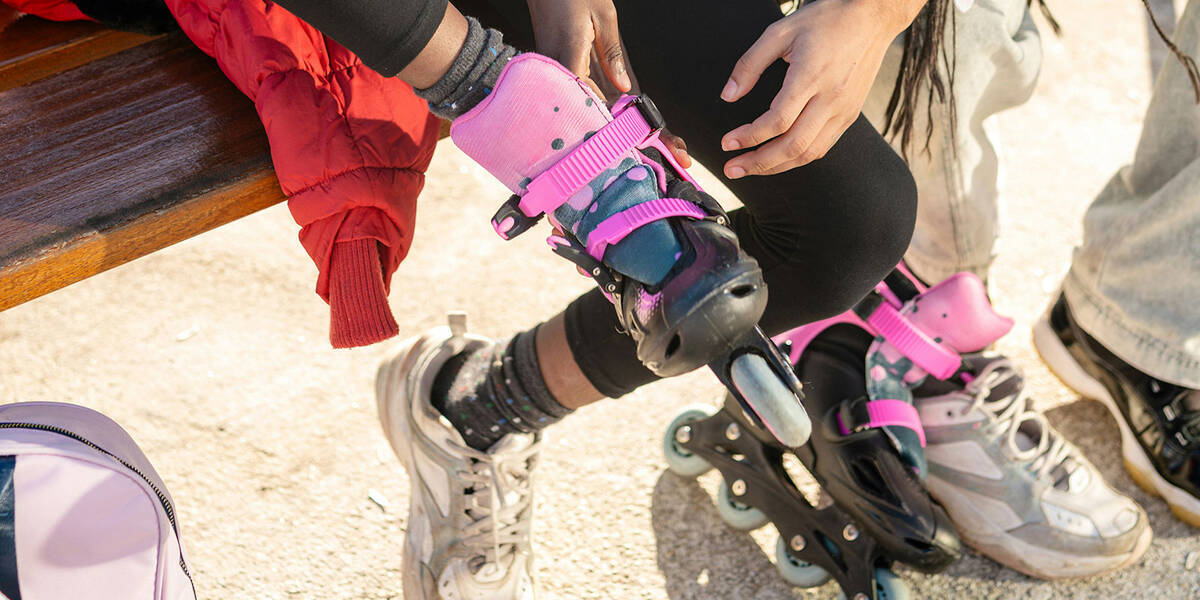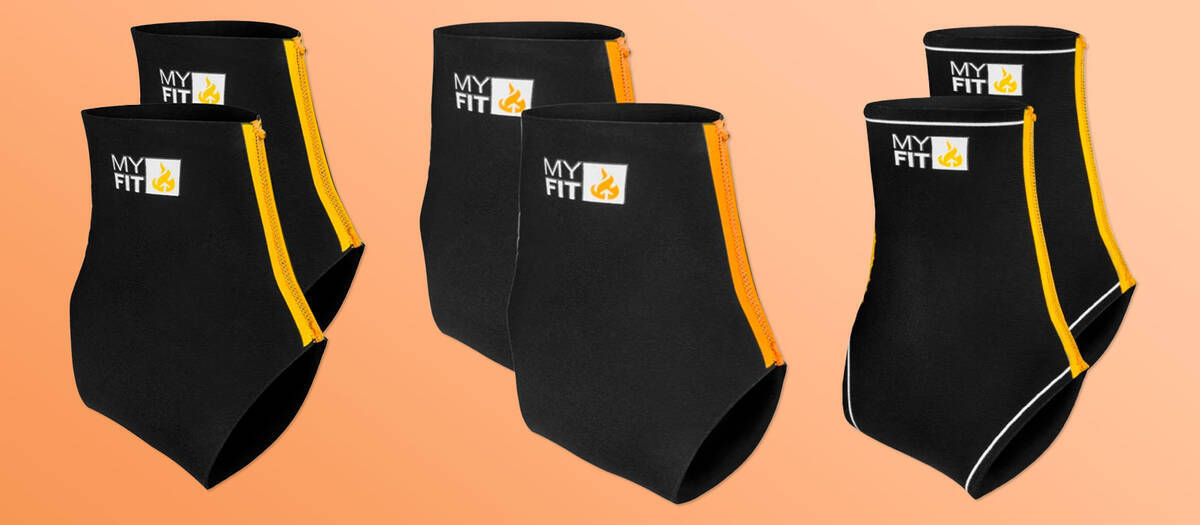Getting Used to Your New Inline Skates (Avoid Blisters, Discomfort & Fit Issues)

This guide caters to those who have recently put on a brand-new pair of inline skates for either fitness or leisure. It provides invaluable tips for beginners facing discomfort, blisters, or foot and ankle pain, and also for intermediate skaters transitioning to a new boot, helping them accelerate the break-in period and achieve comfort more swiftly.
You’ve just purchased your inaugural pair of inline skates and are eager to begin your skating adventure. However, upon trying them on, you might feel a bit of panic as they appear overly tight and apply pressure to sensitive areas. Rest assured, we’re here to assist! We’ll discuss methods to break in your new inline skates and how to navigate the break-in phase with minimal trouble.
Overview
Overview
Why Do New Inline Skates Come with Discomfort?
Though you might be thrilled with your new inline skates, it's entirely normal for them to feel uncomfortable initially. They're likely stiff, your feet are getting accustomed to the new boot's shape, and your muscles aren't yet familiar with the skating motion. These factors often lead to initial discomfort as your body adapts to the skates.
- Normal: mild pressure on your toes or ankles or slight soreness that dissipates after brief sessions.
- Abnormal: sharp pain, persistent pressure, numbness, or blisters that don’t resolve generally indicate an improper fit.
Pro Tip: Inline or roller skates showing evident usage cannot be exchanged for a different size. We suggest trying them indoors or on a clean surface to verify if the size is appropriate.
In the subsequent sections, we will provide further details on fitting.
Ensuring Fit: Confirm Proper Boot Fit Before Breaking In
Before beginning to break in your new inline skates, it’s essential to ensure the fit is just right. Boots that are excessively tight can cause pinching, blisters, or even affect circulation, while overly loose boots can result in foot movement, leading to soreness and instability. Securing the right fit from the outset will make skating more comfortable and pleasant.
Fit verification tips:
- Heel and ankle: Ensure your heel sits securely without lifting during walking or skating.
- Toes: Allow some movement space without cramping against the front.
- Width: The boot should snugly fit the midfoot but not be painfully tight.
- Laces and closures: Ensure even tension for comfort, as uneven pressure can lead to hotspots.
Setting the fit correctly initially makes breaking in smoother and keeps skating sessions free from pain. Remember, breaking in won’t remedy a boot that doesn’t fit properly.
Guide to Breaking In Your New Inline Skates
Having ensured proper fit, it's time to break in the skates! The initial sessions focus on achieving a comfortable adjustment of boots and feet, considering the following aspects:
- Socks: Opt for moisture-wicking socks and avoid cotton to prevent blisters.
- Lacing wisely: Start by loosening, and snug the ankle strap without overtightening.
- Begin with brief sessions: Skate for 20 to 30 minutes on smooth surfaces, gradually increasing distances.
- Pay attention to posture: Maintain slightly bent knees to prevent gripping with toes.
- Optional customization: Some liners allow heat moulding for a personalised fit.
- Prepare for minor discomfort: Hotspots or small blisters are expected, but persistent pain warrants a size check.
Pro Tip: Most users experience initial comfort after about 5 to 10 miles of inline skating. Stay patient, and with regular use, your skates and feet will adapt.
Preventing and Managing Blisters & Foot Pain

Blisters typically occur on areas like ankles, heels, tops, or sides of your feet when boots rub incorrectly, socks are unsuitable, or the fit is incorrect. Fortunately, with proper care and some tips, you can maintain foot comfort and prolong skating sessions without pain.
A great starting point involves using ankle sleeves or neoprene footies. These items provide cushioning and minimise friction on sensitive spots. Additionally, keeping laces and straps snug, but not overly tight, ensures foot stability without pinching. If feet slide around, consider changing insoles for improved fit and stability.
During skating, pause to check your feet, preventing small hotspots from becoming full blisters. Carry blister pads or tape for addressing trouble spots prior to them slowing you down.
If a blister emerges, don’t ignore it. Allow recovery time until it heals, treat it properly, and reassess boot fit and socks to prevent recurrence.
By ensuring the right fit, protection, and attentive care, you can avoid painful blisters and enjoy smoother skating sessions.
Expected Break-In Duration for New Inline Skates
Most skaters note enhanced comfort after 2 to 3 sessions (around 5 to 10 miles), though this can vary depending on the boot type, brand, liner, foot shape, and frequency of use.
If discomfort persists beyond several weeks, something might be wrong—perhaps the boot is improperly sized in terms of width or length, or it simply isn’t a compatible fit for your foot.
Tips for easing the break-in process:
- Commence with short sessions.
- Wear them indoors to soften the liner.
- Gradually build up distance and intensity.
With time and careful progression, your skates should begin to feel more comfortable, enabling longer, pain-free rides.
Tips for Breaking In Skates Swiftly

These simple tips can help make your new skates more comfortable sooner:
- Thick or technical socks: Minimise friction and enhance boot fit.
- Heat moldable liners or boots: Customise fit if skates offer heat-mouldable options.
- Quality insoles: Increase support and comfort.
- Wear skates indoors: Soften liners before longer usages.
Common Inquiries
Why do I experience foot pain when skating?
Foot discomfort is often due to improper fitting, poor lacing, or technique issues. Consistent discomfort warrants a fit assessment, and once size issues are ruled out, examine your lacing technique. If your heel lifts while skating, the likelihood of blisters around the ankle is higher, potentially improved by adjusting and tightening laces. Moreover, your technique influences comfort. Refer to our guide:
Should new skates be tight or painful initially?
While a snug fit is expected during the break-in phase, sharp pain or numbness is not. You should have toe movement but no shifting foot inside the skates.
How many sessions or miles are needed to break in new inline skates?
Typically, improvement is seen after 2 to 3 sessions or about 5 to 10 miles, though this is contingent on several factors, hence there's no definitive answer.
How can I prevent blisters when skating?
Use suitable socks, ankle sleeves, or footies, ensure proper boot fit, and take breaks to examine your feet. If blisters form, allow them to heal fully and adopt preventive measures to avoid recurring blisters. Recommendations include:
- Excluding size issues—if skates are too small, comfort cannot be achieved just by breaking in.
- Verify proper lacing to prevent heel lifts.
- Use ankle sleeves if needed.
What should be done if the fit feels incorrect even after breaking in?
Re-evaluate the boot size, width, and your socks. Persistent discomfort usually points to a misfit.
Do insoles enhance comfort or fit for skating?
Indeed, quality insoles provide better arch support, secure fit, and general comfort enhancements.
Explore more about insoles for inline skates in the accompanying video, where Jeppe discusses insoles, shock absorption, and much more.
Are there any quick tricks to break in faster?
Short skating sessions, indoor usage, and wearing skates at home are beneficial.
Is it acceptable for toes to touch the boot’s front?
Light contact is acceptable; however, pressure or cramping is not.
Can one skate for several hours in new boots?
Not advised. Gradually increase skating duration during the break-in period.
